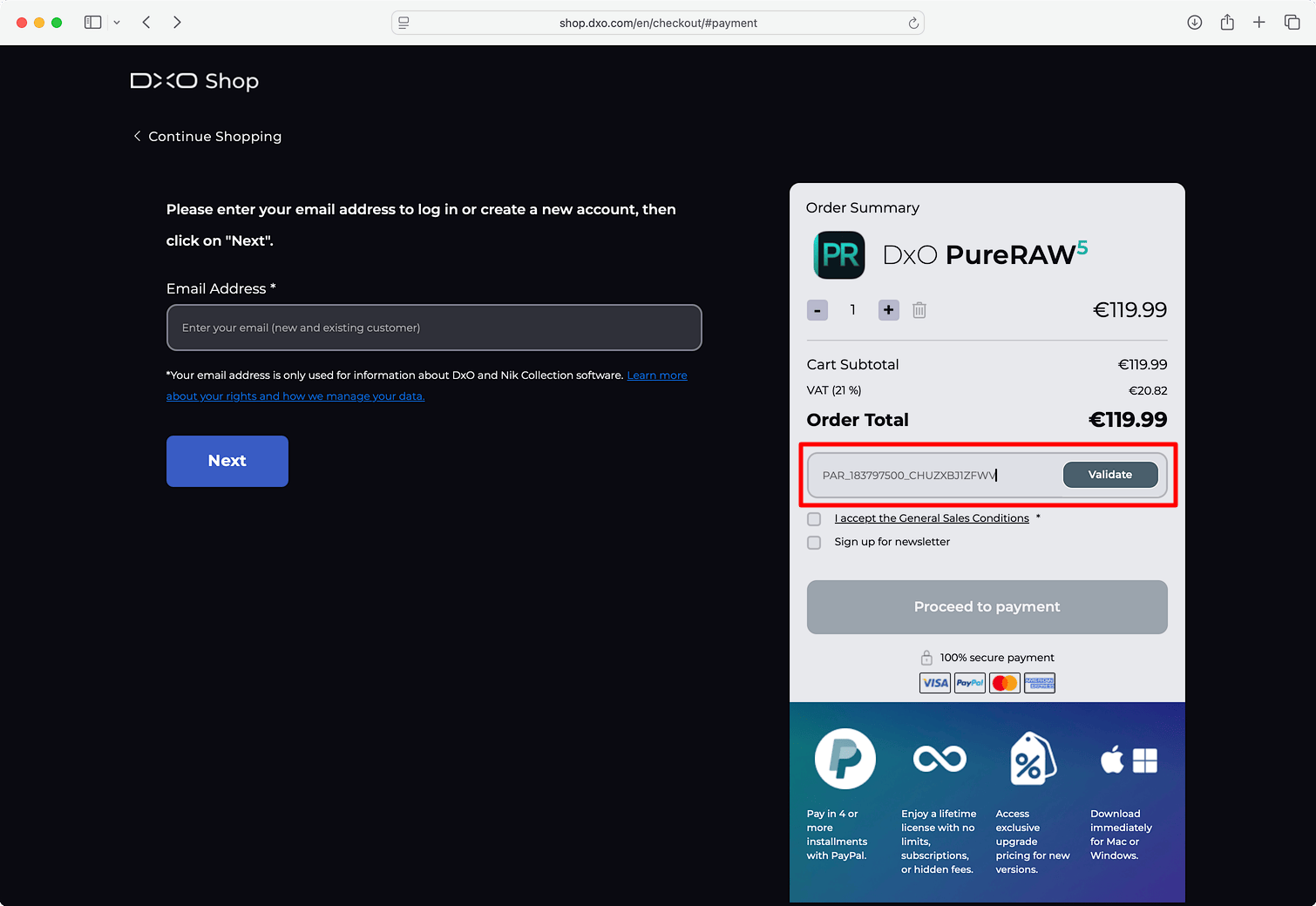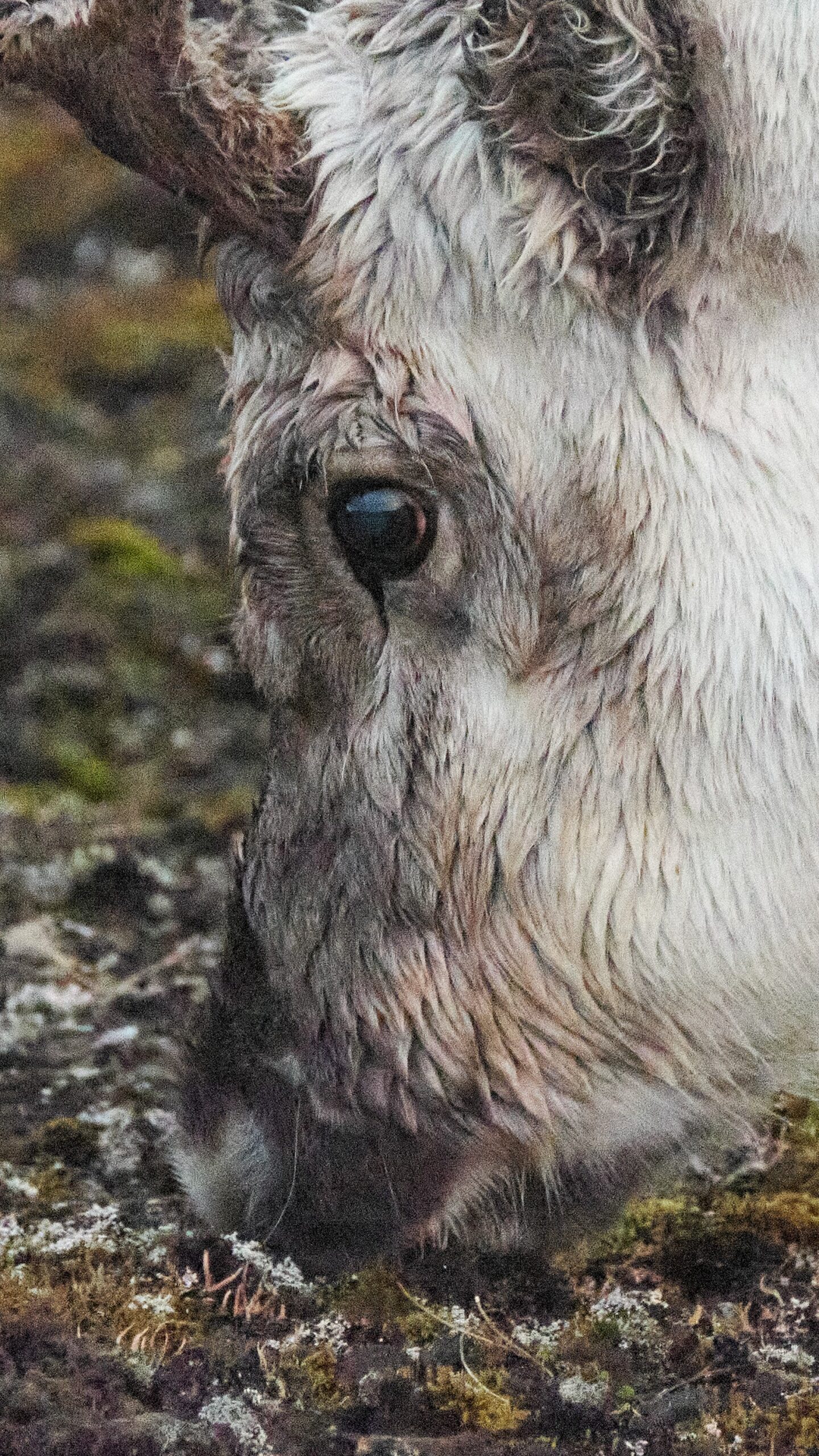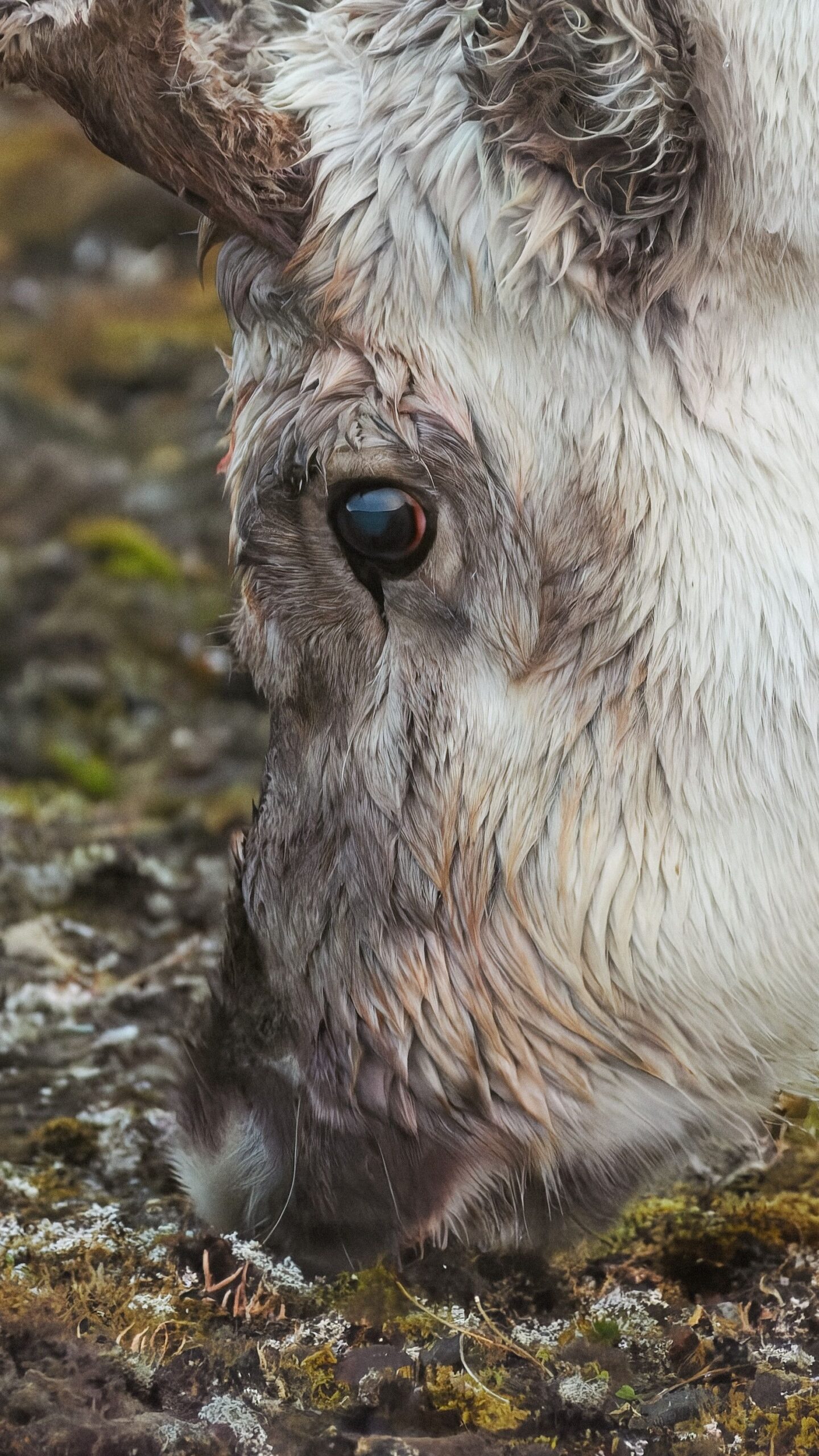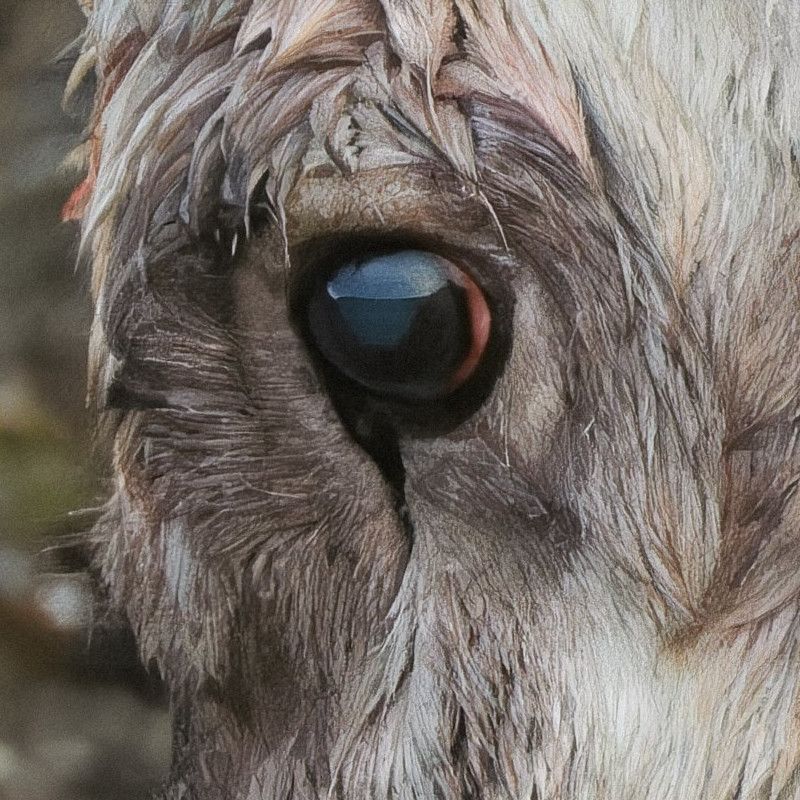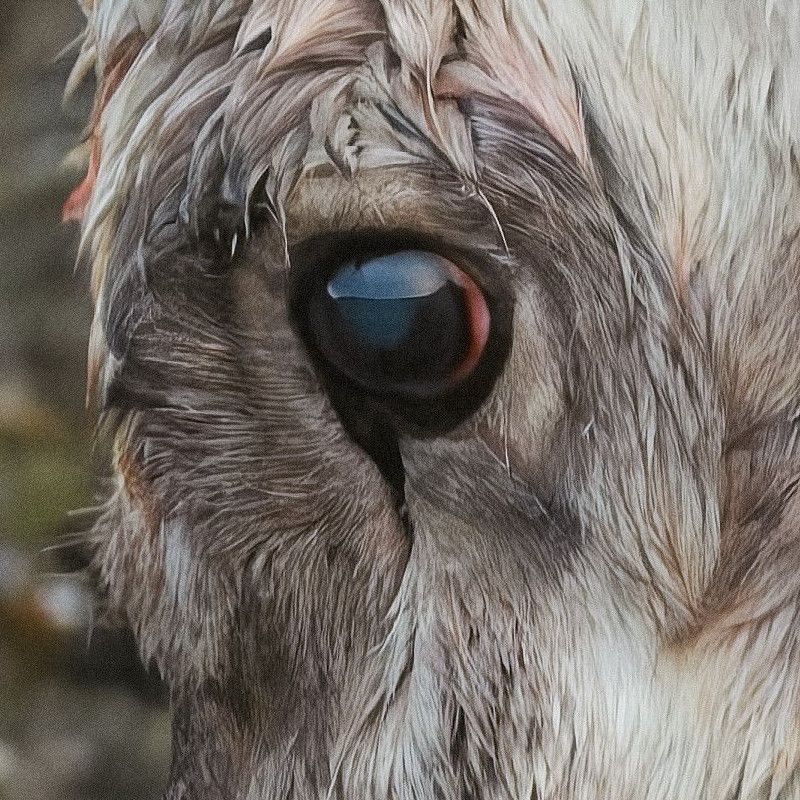The new version of DxO PureRAW 5 introduces a new method for demosaicing and denoising RAW files, which you can then edit in Lightroom, Capture One or the editing tool of your choice, just as you’re used to. The biggest news is the advanced RAW processing engine DeepPRIME 3 and local adjustments that allow different parts of the image to be processed with different intensities. DxO PureRAW is also available with a 20% discount over the Easter weekend.
In my experience, many photographers have incorporated DxO PureRAW into their workflows, and I expect that version 5 will attract even more. Let’s take a closer look at what’s new.
The New DeepPRIME 3 engine
DxO PureRAW acts as a pre-processor for RAW files before they are edited in applications such as Lightroom or Capture One. Its high-quality processing includes excellent noise reduction, improved sharpness, and optical corrections for chromatic aberration, lens distortion, or vignetting. It improves the technical quality of almost any photo and is especially helpful when working with high-ISO images or those affected by diffraction at higher apertures.
All this was true in previous versions, but version 5 promises a leap forward thanks to the new DeepPRIME 3 engine. So let’s compare the results:
When I reviewed version 4 last year, I found that the then-new DeepPRIME XD2 engine smoothed out some details more than I liked. In contrast, new DeepPRIME 3 does a better job right out of the box (see the cat’s iris in the example above), and the overall result looks more natural to me. It does leave some slight noise in the background — if you want a completely noise-free image, you’ll have to use XD2s engine or increase the Luminance setting, but I personally prefer DeepPRIME 3’s default output, especially for printing.
A welcome addition is the beta support for Fujifilm X-Trans sensors in a special XD3 X-Trans version of the engine. Unfortunately, DxO wasn’t able to provide full support for the fifth generation sensors (X-T5, X-T50, X-H2, X-H2S and X100VI) at launch. They say it’s coming, but it’s worth noting that similar promises about the previous engine have gone unfulfilled in the past. Hopefully this time will be different.
However, even without support in XD3, you can process these RAW files with the older engine, and the results are still quite good. But if XD3 is your main reason for upgrading, and you’re shooting with a camera that has the latest X-Trans sensor, it might be worth holding off on the license for now. Also keep in mind that the new engine is slower and processing may take longer depending on your hardware.
In the following image of a reindeer (Fujifilm X-T2, ISO 51200) you can clearly see the difference between the older DeepPRIME XD and the new XD3 X-Trans. At first glance, the results of the older XD engine seem to be sharper when zooming in (or on larger crops below), but the details look a bit unnatural. In this extreme case, I used the Strong sharpening preset with the XD3, and I think the fur looks better overall.
The interface and controls have undergone some minor changes, but nothing that should confuse existing users. You can still see all applied adjustments live in the preview (or process multiple images in batch mode), and the processing can be fine-tuned using several parameters.
When it comes to denoising (the Denoising & Demosaicing tool), in addition to selecting the engine (DeepPRIME 3, DeepPRIME XD2s/XD, DeepPRIME XD3), you also get two sliders:
- Luminance — controls noise suppression
- Force details — controls fine detail rendering
In the Optical Corrections tool, you can apply:
- Sharpening with Lens sharpness optimization — with four presets as before and, for the first time, a precise Intensity slider
- Vignetting correction
- Chromatic aberration correction
- Lens distortion correction with cropping options:
- Image cropped to original ratio
- Maximum rectangle
- Complete image area (including borders without image information)
There aren’t more options because the corrections are based on precisely crafted lens-camera profiles, so you simply enable or disable them.
Local Adjustments
Another major new feature in version 5 is local adjustments. This allows you to define different levels of noise reduction and sharpening in specific areas of an image. To support this, the interface now includes a new tab system in the right panel — Global Adjustments, Local Adjustments, and Export Options. Local adjustments are represented by a brush icon, and once activated, a brush parameter toolbar appears at the top of the image.
A small but useful improvement is the ability to save custom processing presets, which can be used for individual photos or for batch processing.
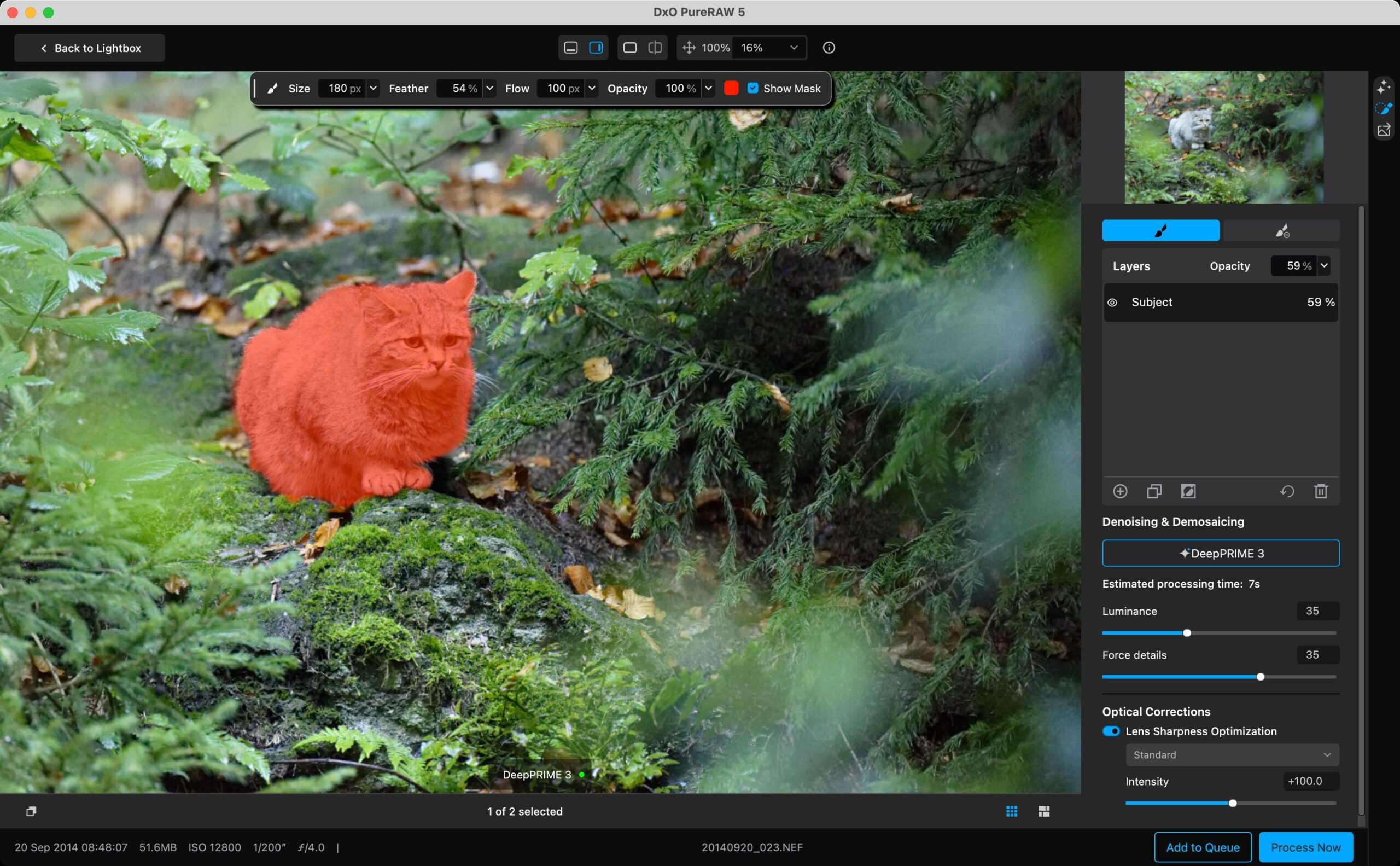
In the side panel, you can switch between the brush and eraser, and manage layers, each representing a selected area. Below the layer list are buttons to
- Create a new layer
- Duplicate an existing layer
- Invert the mask (great for creating separate layers for background and subject)
Each layer lets you adjust three parameters:
- Luminance for noise reduction
- Force details to enhance details
- Lens sharpness optimization for sharpening (both presets and Intensity slider available)
Note that the selected engine applies to the entire image, so you can’t use DeepPRIME 3 in one area and XD2s in another. However, the available sliders give you enough flexibility to fine-tune detail and noise where necessary.
At the moment, DxO PureRAW does not offer automatic mask creation, so you’ll have to rely on the brush tool.
Conclusion
Version 5 proves that DxO PureRAW is not just the little brother of the full-fledged PhotoLab editor, but an essential part of the French company’s photo editing line. The application introduces useful new features, and the new DeepPRIME 3 engine even makes its debut here.
DxO PureRAW 5 is available for €119.99 or in 4 installments of €30. Upgrades from versions 3 or 4 cost €79.99 or 4× €20. During the Easter weekend, new users can get it with a 20% discount (see below). The license is perpetual (no subscription), and in my experience even older versions continue to receive optical module updates to support newer cameras and lenses, which is nice.
DxO PureRAW with 20% discount
From April 17 to 21, 2025, new users can purchase DxO PureRAW 5 with a special 20% discount. Simply copy the discount code below:
PAR_183797500_CHUZXBJ1ZFWV
and go to the order page where you’ll enter the code in the Enter my promo code field.
